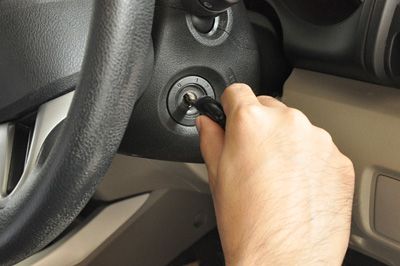
How Standing Idle is Setting You Back
Pop quiz: Which uses more fuel and produces more emissions – letting a passenger car idle for 15 seconds or turning off a car and restarting it after 15 seconds?
If you answered that restarting the car uses more fuel, you would not be alone. Most people believe that starting is the less efficient option. But that’s not the case, according to research conducted by Argonne National Laboratory. Results of their experiment revealed that just 10 seconds of passenger car idling time actually uses more fuel than stopping and restarting the engine.
All of the fuel used during engine idling adds up to a real bottom-line impact. The U.S. Department of Energy estimates that Americans waste about 6 billion gallons of gas every year. How many of those gallons are a result of vehicles in your fleet needlessly idling, and how much is it impacting your fuel expense costs?
The good news is that there are several things you and your organization can do to eliminate unnecessary idling of your fleet vehicles.
1. Motivate with Bottom-Line Facts
By determining just how much money your organization can save by implementing an idling reduction strategy, you establish an actual monetary value and justification for doing so. Luckily, the U.S. Department of Energy has made this easy to do by providing you with an interactive idling reduction savings calculator that you can access at www.transportation.anl.gov/downloads/idling_worksheet.xls.
2. Implement and Enforce a Ban on Unnecessary Idling
Educate and train vehicle operators to turn off their vehicles whenever idling is not necessary for work or safety reasons. The U.S. Department of Energy has also provided a helpful toolkit to implement this ban that includes posters, fact cards, PowerPoint presentations and other useful communication templates. The toolkit is available at www1.eere.energy.gov/cleancities/toolbox/idlebox.html.
3. Invest in Idle Reduction Technologies
“The propulsion engine is designed to move the vehicle, but the job the utility truck does may be done more efficiently by a device designed and sized for that job, reducing fuel use, costs and emissions,” said Dr. Linda Gaines, systems analyst at Argonne National Laboratory. These days, many technologies exist that can reduce or eliminate vehicle idling, including:
• Auxiliary Power Systems – These systems use batteries, fuel cells or small engines to provide heating, cooling and electronic device power without the use of the engine.
• Alternative Heating/Cooling Systems – If you’re located in a cold weather climate where vehicle cabin heat is a necessity, installing air heaters into your fleet’s vehicles offers a more economical way of keeping operators warm, tapping into the engine’s fuel source to heat the cabin. Another option is to install an energy recovery system that captures and uses engine heat to warm the cabin.
• Automatic Power Management Systems – These systems monitor battery power levels while the engine is turned off and automatically restart the vehicle when the engine is needed to recharge the batteries.


